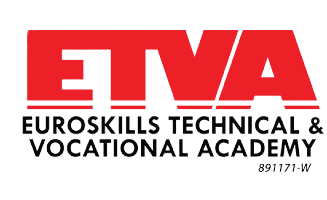Cheese Fundamentals
The making process starts with the ripening of milk. It comes with different textures, flavors, and varieties. The variety determines the processing, characteristics, and ingredients of the cheese.
How does milk turn into cheese?
We now know that it comes in different varieties, and all cheese makers follow 10 essential steps, let’s have a quick overview of the making process of it
- Preparing the milk
- Acidifying the milk
- Curding the milk
- Cutting the curd
- Processing the curd
- Draining the whey
- Cutting the curd
- Salting the curd
- Shaping
- Aging
A Step-By-Step Guide on making Cheese
-
Step1: Preparing the milk
This is the first and top must step of making process in which Milk plays a vital role to make it. Then they start the process by providing mild heat treatment to destroy the acetic organism and provide better conditions for cheese. Once your milk is heated, the cooling process is done, and cooled the heated milk to 90°F and ready for the starter cultures.
-
Step 2: Acidifying the milk
This is the second step of making. In this step, cheesemakers start refining or acidifying the milk and examine the presence of bacteria that can be grown and make the milk sour. They standardizes this step to make the process typically modern. The added starter and non-starter cultures help to acidify the milk. During this process, the pH level of the milk drops down and the flavor of the cheese starts to build.
-
Step 3: Curdling the milk
This is the third step of process. After checking the pH level and texture of the milk cheese they starts to examine and manipulate it, the milk is still in a liquid state, and the curdling process also happens naturally.
-
Step 4: Cutting the curd
This is the fourth step of process. In this process the whey and curd mixture is separated, this process continues until the pH level reaches 6.5. The large mass of the curd form in the vat (cheese maker machine), then the curd is extracted from the vat with a long curd knife which is long in length that reaches the bottom of the vat.
-
Step 5: Processing the curd
This is the fifth step of process. After being cut, the curd is continuously extracted and also involves processing like cooking curds and stirring curds. The curd extracts the moisture and the cheese is dried.
-
Step 6: Draining the whey
In this process, the curd and whey are separated. After the whey is removed only solid chunks of curd remain in the vat. By applying pressure to released extra whey from curd they often compact the curd and give extra force for more whey out.
-
Step 7: Cutting the Cheese
After the extraction of whey the curd forms the large slab. The cheese maker gives the proper shape and size to the cheese, they will repeat the same process of cutting and restoring.
-
Step 8: Salting
Now the cheese comes in an eatable state. To add the extra texture and flavor they adds salt.
-
Step 9: Shaping the cheese
No-any extra ingredients are added in this step. The cheese maker gives proper size and shape. It is usually rectangular or round in shape.
-
Step 10: Aging of Cheese
The aging process can take anywhere from many years to a few days, but it should be kept in a cool and controlled environment.
Ingredients for making Cheese
The main ingredient for making is the milk. Milk is considered the star of the process.
It is made from the milk of cows, buffaloes, goats, and sheep.
Flavoring and texture can be added depending on the place where it is demanded from. Some common ingredients are herbs, spices, and peppers including (hot and sweet).
Bacterial cultures
The cheese culture takes several types of lactic bacteria. The lactic bacteria are considered as the primary source in making called lactic acid bacteria (LAB).
Without bacterial cultures, you may not able to produce good quality cheese.
Why are we learning about it?
It’s because one entering into the Culinary world must be well aware of it. There are many food items where Cheese is used for making it. That’s why IHTS has included in Diploma in Culinary Arts Academy Course.
Read more on the Details of Culinary Arts Academy Course
IHTS is the Best Hotel Management College in Kathmandu, Nepal. Also cosidered the Best Culinary Arts Academy in Kathmandu, Nepal. Please feel free to contact us for any information related to Hotel Management & Culinary Arts. It will be our utmost privilege to get you entertainined.



